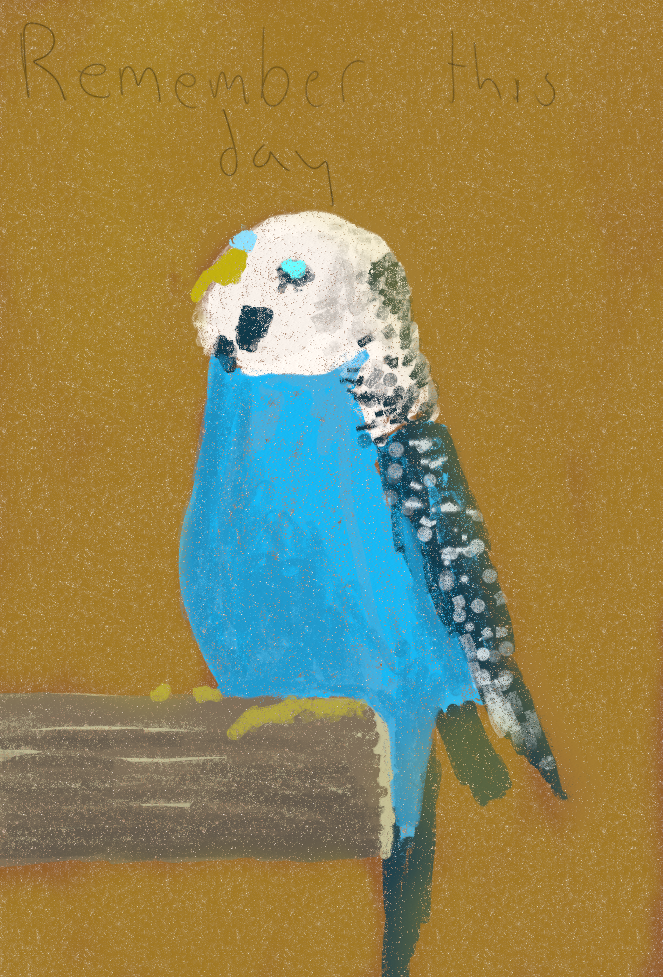Hello, I recently bought an acoustic guitar, and this is my second attempt at learning to play.
I made some progress, teaching myself basic chords and strumming, but I’m having trouble following sheet music/chord patterns and similar resources. Sometimes, when I’m watching a YouTube video on how to play a song, they don’t provide the strumming pattern or other details.
I’ve only been playing for a month, and I really enjoy it, but I feel like I’m starting to slow down again. I did download a book on how to improve my playing, which I plan to read later today.
I was wondering if anyone had a few resources they’d be willing to share.
Thank you!
Practise by accompanying your favourite music. That way you don’t get hung up on the strumming pattern and focus on enjoying, which is what keeps you coming back for practice.
There are abundant beginner videos on YouTube that teach strumming. I think the important thing is to mix learning technique with just enjoying making music by any means.
(Source, self taught playing 20 years)
This is how I did it. Play, play, play, a lot is key to learning but if you do it accompanying music you love then practice never becomes a chore.
I don’t wanna be a buzzkill, but if you’ve only been practicing for a month so far, I’m not sure there’s gonna be any particular resource that’s going to make you improve faster, short of taking formal lessons. It sounds like you’re already making good progress, so just keep doing what you’re doing! Read that book you downloaded, add new finger exercises to your daily routine, and drill the chords and scales and such into your muscle memory so you can do them in your sleep. But this all takes time.
The biggest factor, at least for me, was consistently practicing for years. I’ve been playing for about 17 years now and, by the end of the first year, I had spent hundreds of hours with the guitar in my hand (it was my primary hobby). I’m no rock star, but I got pretty decent by just practicing the stuff I wanted to play and learning the basic fundamental concepts like scales, arpeggios, chord structure, etc.
One good piece of advice my old man gave me: even when you’re not actively practicing, just having the guitar in your lap when you’re working on other stuff winds up making it extremely comfortable to handle. I’d sit with the guitar in my lap while doing homework, or using the computer, and would end up fiddling with it here and there, gradually getting better at navigating the neck, getting more familiar with the distances between the strings, etc.
And use. the. pinky. A lot of guitarists shy away from fretting with the pinky finger if they can avoid it, but they’re doing themselves a disservice. Put in the effort to train your pinky to fret and it will pay dividends when you start tackling more advanced stuff. Even if you can easily hit a note with your ring finger, hit it with the pinky to give the pinky more practice so it becomes second nature.
Find some finger exercises that help teach finger independence. I learned a great one from a Chet Atkins VHS tape back in the day, but I can’t find it anywhere online at the moment; I’m sure there’s a million similar exercises on YouTube though.
If you’re learning a song through a video on YouTube and it doesn’t tell you the strumming pattern or the tuning or whatever, you can probably find that info on Ultimate Guitar. I’m not affiliated with them, just been using their site for basically the entire time I’ve been playing. Has an absolute mountain of chord charts, tabs, yada yada. Very useful.
Thanks for coming to my TED Talk. 🎸
Keep at it! The learning curve is not a straight line, just like with any skill. You’ll see fast progress, just to be followed by a long plateau of no progress or even feel you’re getting worse. And then you notice possibly big improvement again. And again.
Don’t worry about following sheets/chords initially. If chords are not in your muscle memory, you’re basically doing three complex tasks simultaneously, reading, figuring out chords and fingering chords. I’d try to memorize one or two simple pieces first, to get the chords under your belt. Start simple and stay patient, it’ll take time.
Don’t forget the rhythm. Play on top of recordings. You can be pretty liberal with the harmonics, but if you keep a steady beat it’ll probably still sound good.
If you want to get better, you have to practice every single day.
You’re going to suck at first, but then you’re going to suck less. You have to learn enjoy the process, which it sounds like you do, so great! I like to break up my play time into practicing something new and having fun; they’re both important.
One thing I’ve found is that keeping my guitar out and on the wall makes it a lot easier to get started playing, even if I don’t feel like it at the time. Once I’m about five minutes into playing, I’m into it.
Oh, and practice with a metronome. Most guitarists suck at rhythm (myself included). Using a metronome beats it into your head.
beats it into your head
Don’t give up.
In my opinion, outside of some specific songs, strumming pattern will end up being your personal touch. You’ll strum in a certain way, and as long as the chord progression is right, it’ll sound correct. More attention will be paid when you’re playing individual notes. The rest is really up to you, and that’s probably going to seem frustrating at first, but it’s really liberating once you’ve been playing for a while.
My personal recommendation is to learn stairway to heaven by Led Zeppelin in its entirety. There are a lot of unusual chords, barre chords, techniques, etc in that one song. Additionally, you’ll need to either practice hybrid picking or finger picking. When you finally learn it completely, almost any other song will seem easy to learn. I learned it in my first few months playing guitar (20 years ago) and I’m so happy that i did, i still find it pretty easy to pick up most other songs, but also find myself playing it from time to time.
Yeah, learn Stairway to heaven and then go try out guitars in stores.
That sounded snarky in an unhelpful way.
:-) It was a genuine joke. It’s the forbidden song, right?
Is it forbidden ? looks like I missed a reference there
Here ya go! https://www.youtube.com/watch?v=UCh6guovbt0
cheers I’ll have to watch that
Know any songs that are good for learning piano?
I’m so sorry that i don’t, I’m not a great resource for piano. Good luck on your journey!!
For me it really helped finding arrangements of rock/metal, punk, and pop stuff. Some video game music too. I’d say try to find simple arrangements of your favorite songs. I’m no expert, but I’ve been playing almost daily for 5 years with no lessons.
One Final Effort is really hard. Got any good video game songs for learning?
https://m.youtube.com/watch?v=QY5SWHMPwI8
This is the easiest version of One Final Effort I’ve found. Not super hard, but not beginner level. Keep it and try to play it slowly at first.
As for other video game songs, look into Chrono Cross and Chrono Trigger, older zelda stuff, older pokemon songs. Things like that would be better to start with. Really anything slow that you’re already familiar with.
A few of the VG songs I used to learn were
https://www.youtube.com/watch?v=sOOkfDXw0jM
https://m.youtube.com/watch?v=1lKGxoAlNhc
https://m.youtube.com/watch?v=kkUryy_DRSI
https://m.youtube.com/watch?v=2gaAEiq2vgQ
https://m.youtube.com/watch?v=OJnhg3QNe_M
Try to think of stuff like that to start. You can find tons of these easy sheets for free if you look around too. Although I did pay for musescore until they started charging me extra with no warning.

Drag can’t get drag’s fingers over this part of One Final Effort here
Oh yea that’s a tricky one. You want to keep your right hand in the chord shape as you hit each note. There are different ways to do it and it’s entirely possible to do with one hand however if you use a sustain pedal you can hold the low note using the pedal and use both hands for the rest.
What’s the chord shape? Are you saying to move the hand without moving the fingers?
Alas, drag never got into JRPGs, but drag will try One Final Effort and your other songs when drag can
Maybe you’d like these more:
https://m.youtube.com/watch?v=49e7gZ13-oA
https://m.youtube.com/watch?v=vpCwRryy0kk
You can find simple arrangements of almost anything.
Otherwise just keep at it man. You’ll get there if you keep practicing.
Put the sheet music down and noodle around every day for a few months
Slow down. A lot. Slow down a painfully annoying and boring amount and rep the hard chord changes, the weird melodies, any of it. All of good technique is just good muscle memory and muscle memory is only built up through repetition.
Remember that every bad habit that you don’t nip in the bud early can have after effects to your technique for years.
Yes this is amazing advice. Playing slow but consistently will eventually sound better. No breaks in the music or pauses to adjust fingers.
I know everyone tries to avoid this and I’m sure you’re trying to learn on the cheap like everyone else, but honestly, get a few lessons with a good local tutor. You’ll learn more from them in a few short hours than you will with months of trying to do it yourself.
Famous guitarists never seem to say how much hard work went in to perfecting their craft, but it is a lot. And all the good ones took lessons and some still take lessons even though they’re on international tours and have sold millions of albums.
Nathan Mills AKA Beyond the Guitar does a good job of not witholding any of that when he gives tips. He does tutoring as well, but I haven’t tried it. His music is fantastic (mostly covers and arrangements, some compositions).
I bought a poster of all the chord shapes and would constantly run through the whole thing while watching TV and a huge Beatles book because everyone knows Beatles songs. They literally taught us a bunch of them in grade school music classes growing up. After a couple of years of basic chord structure and strumming, I then moved on to learning scales. Mostly right now, concentrate on chord shapes, building up hand strength, and strumming. Pick easy three chord songs that you know and enjoy and play the heck out of them.
Dude, The Beatles Complete Chord Songbook? Totally how I taught myself guitar too. My only beef with it was that I need to tune Beatles songs down a whole step for my vocal range, which was not practical as a beginner, but I learned all the chord shapes really quickly
Yep, that’s the one! Sucker is fucking heavy too lmao.
I photocopied pages back in the day so they were easier to put on a stand
Most importantely have fun. Most people will tell you to practice regularly, but that’s only possible if you genuinely enjoy playing. If you go for a daily routine of boring exercises, there’s a chance it will create a loathing for the instrument and the practice, whereas if you do a bit of everything (cool riffs & refrains, tedious exercises, wild experiments, etc), you will build up a virtuous & pleasant realtionship with your instrument, and you will pick it up every day without even thinking about it.
Practice everyday, look into adjusting the action on your acoustic, and build calluses. Seriously though, practice everyday. There are no shortcuts to get around practice. If you practice anything enough you will get better at it.
Best thing to do to make sure you enjoy playing the instrument is to take it to your local guitar shop for a setup. If it’s not set up well it takes much more pressure to fret the notes cleanly and it can be painful both on your finger tips and the muscles in your hand.
Get a setup so its comfortable to play and you’ll be able to play much longer.
+100. Best thing I ever did.
Hold the books and lesson videos for 6 months to a year. Learn by playing music you want to learn. Songs you love. Start with some easy 3-4 chords stuff. Get the strumming by playing along with the song. Add in a lick that you can manage. Gradually progress into more complex songs with new chords. Get comfortable with singing along. Enjoy it. Enjoy it enough that you want to play a bit more each day.
Convince yourself that you’re not improving because you need that one guitar, only to play for one month and let it catch dust afterwards.
Can confirm. Worked for me.







